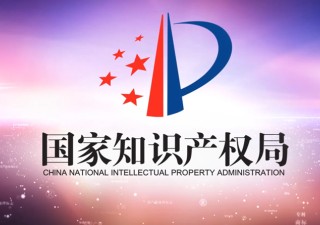CNIPA often applies stricter criteria during the substantive examination of trademark registrability, particularly regarding deceptiveness. Ling Zhao reminds brand owners that there is always an opportunity to overcome official refusals through review procedures and subsequent appeals before the courts.
In recent years, an increasing number of trademark applications have encountered rejections due to being considered “deceptive”. Pursuant to Article 10.1.7 of the China Trademark Law, a sign which is deceptive and is liable to mislead the relevant public regarding the quality, origin of goods or other characteristics of the goods shall not be used as a trademark. “Deceptiveness” referred to in this clause occurs when descriptive elements such as the type, composition, or ingredients of the goods contained in a trademark are inconsistent with its designated goods, potentially leading to public deception.
Examination guidelines and stricter criteria in recent practice
In the Guidelines for Prohibiting the Use of Signs as Trademarks issued by the National Intellectual Property Administration (CNIPA) in January 2023, the application of the absolute ground of refusal concerning deceptiveness cover following two aspects:
-
To determine whether the questionable signs are deceptive, it is necessary to conduct a specific analysis based on the characteristics of the specified goods or services, to see if the use of the questionable sign on said goods/services may cause the relevant public to misunderstand the quality, quality, cultivation methods, and other characteristics of the goods.
It is also emphasized in the guidelines that if a sign has multiple meanings or can be used in different ways, as long as one of its meanings or ways of use is likely to make the public believe that it falls under the circumstances specified in Article 10.1 of the China Trademark Law, or if a specific group of public has reasonable grounds to believe that the use of the sign as a trademark violates the provisions of this article, then the sign falls under the aforementioned circumstances of violation.
With examination standards becoming stricter, the number of trademark applications encountering rejections due to being considered as deceptive has been increasing. According to unofficial statistics, in 2023, there were 20,893 total rejection decisions issued by the CNIPA pursuant in the review of refusal proceedings to Article 10(1)(7), i.e. the absolute ground of refusal due to deceptiveness, while the number was 22,973 in 2024, around a 10 percent increase over the previous year.
Typical scenario of rejection due to deceptiveness
Trademarks containing generic names
In the rejection decision against trademark No. 75469881 CHATEAU GATEAUX in Class 43, CNIPA found that the word “GATEAUX” means cake, and when it is used on designated services such as renting chairs, tables, tablecloths, and glassware, it can easily cause confusion among the public about the characteristics of the service content.
In the rejection decision against trademark No. 76117484 SBT ULTRASONIC in Class 35, CNIPA found that the word “ULTRASONIC” can easily cause confusion among the public regarding the content and characteristics of the service.
In the rejection decision against trademark No. 76828647 CRYSTAL SAFFRON in Class 3, CNIPA found that the word “SAFFRON”, when used on designated “spices”, it is easy for the public to mistake it as the raw materials, aroma types and other features of the products, although the applicant argues that the trademark as a whole would not be understood as a plant, but as a crystal decoration or ornament with saffron appearance.
In the rejection decision against trademark No. G1755040 SHOWER THOUGHTS in Classes 16 and 20, CNIPA found that the trademark, when used on goods unrelated to showers, can easily lead consumers to misidentify the features, functions and uses of the goods. This mark is considered devoid of distinctiveness at the same time. In the review, the applicant argued that the overall meaning of the trademark “SHOWER THOUGHTS” is “thoughts generated during showering”, and that it does not directly refer to shower products. It is distinctive and will not cause confusion among consumers about the functions and properties of the goods.
Trademarks containing raw materials or other elements that can be associated to the goods
In the rejection decision against trademark No. 76671880 INTIMATE ROSE, used on goods in Class 10, CNIPA found that the trademark is likely to be misled as of the raw materials and other characteristics of the goods by the relevant public.
In the rejection decision against trademark No. 75829797 ON-BRIGHTENING, used on cosmetics, etc., in Class 3, CNIPA found that the word BRIGHTENING in the mark may easily mislead the public about the features, uses and other characteristics of the goods.
In the rejection decision against trademark No. 72022243 VISION PRO, used on services such as computer software programming and technological services in Class 42, CNIPA found that the word VISION may easily mislead the public about the content and characteristics of the services.
In the decision of review of refusal, CNIPA considered the following mark deceptive in terms of quality of the goods for containing the words NATURE, PURE, etc. The trademark specimen is given as below:

(IR No. 1731999)
Trademarks interpretated into separate parts with meanings that could be associated to the goods or with meanings provided by online dictionaries
In the rejection decision against trademark No. 74512898 ABSOLUE ROSE PDRN, used on the goods cosmetics, etc., in Class 3, CNIPA found that the word PDRN in the mark could mean polydeoxyribonucleotide, and the words ROSE and PDRN in the mark can mislead the public about the raw materials and functions of the goods.
In the rejection decision against trademark No. 77085951 M PHOTONS used on goods including photolithography machines for semiconductor manufacturing, etc., in Class 7, CNIPA found the word “PHOTONS” included in the trademark application is easy to mislead for the regarding the technical and other characteristics of the goods.
In the rejection decision against trademark No. 76844212 RADIOEAR, used on the goods computer software, recorded computer programs technology equipment, etc., in Class 9, CNIPA found that the trademark is likely to mislead the public about the functions, uses and other characteristics of the product, even though the applicant argues that the trademark is a fictitious phrase with no fixed meaning, and is not deceptive in itself. When used on designated goods, it will not cause the relevant public to misunderstand the functions, uses, and other characteristics of the goods.
In the rejection decision against trademark No. 77291872 SKINHDOR, used on goods including human medicines, etc., in Class 5, CNIPA found that the word “SKIN” contained in the mark can easily mislead the public about the functions, uses, and other characteristics of the goods, even though the applicant argued that the trademark “SKINHDOR” is composed of a combination of English letters and is a unified whole. For the relevant Chinese public, English trademarks are generally not recognized after translation. The trademark has already formed a corresponding relationship with the applicant through use. In addition, there have been other trademarks that have been approved for registration similar to this trademark.
In response to official refusals like the above, we always try to argue that the trademarks are a unified whole and should not be understood as separated parts. We always conduct searches in the trademark registry database for relevant case law, but CNIPA would in most cases reject considering any similar precedents by quoting the case-by-case rule.
Apart from the above frequently seen scenario, some “sensitive” words that are associated to political, geographical, environment, institution, social events, etc., would also likely encounter official rejections, such as the words green, eco, school, expo, nature, nano, etc.
Unique cases overturning CNIPA’s rejection due to deceptiveness
In order to overcome the official refusal due to generic names contained in the trademarks, we would suggest limiting the designated goods/services to be the goods as described in the marks.
For example, application No. 61458749 AB酶 (AB enzyme) was provisionally refused by the trademark office, and then the review board of the trademark office due to the word “酶” (enzymes) contained in the mark, pursuant to Article 10(1)(7) of the China Trademark Law. The applicant appealed to the court, which found that the trademark, used on the goods industrial enzymes and food industry enzymes, is not likely to cause the public to have a wrong understanding of the characteristics of the raw materials, ingredients, etc., of the goods, and is not deceptive. i
Despite the case-by-case rule, CNIPA and the court would still take relevant precedents into consideration, and keep consistency in criteria, such as if there are several cases of the same applicant for the same or substantively identical marks.
In the decision of review of refusal against trademark No. 76342371 BEST BUY (specimen shown below), used on the services of electric appliance installation and repair, etc. in Class 37, CNIPA found that the evidence submitted by the applicant, such as the review decision against trademark No. 3909917 “BEST BUY and Figure”, i.e. Shangpingzi [2008] No. 05222, shows that the trademark as a whole has significant features that are easy to identify, and the trademark has a high reputation internationally and also has a certain reputation through use in China. The text composition, expression form and colour composition of the applied trademark in this case are quite similar to those of the “BEST BUY and Figure” trademark mentioned above. The use of the applied trademark on designated services is not likely to cause consumers to mistake it and does not constitute the situation stipulated in Article 10(1)(7) of the China Trademark Law.

(Trademark No. 76342371)
In this exceptional case, CNIPA has referred to and followed a successful precedent of the same applicant.
For trademarks composed of English or other foreign languages, we cannot omit the important fact that per general knowledge of the Chinese public, these trademarks composed of foreign languages may sometimes be perceived as meaningless words. Article 8 of the Provisions of the Supreme People’s Court on Several Issues Concerning the Trial of Administrative Cases Involving Trademark Authorization and Confirmation, stipulates: “When the trademark concerned is composed of a foreign language, the people’s court shall examine and determine whether the trademark in foreign language has distinctive features based on the usual understanding of the relevant public in China.” This rule also applies to the examination of Article 10(1)(7), emphasizing the importance of considering the “usual understanding of the relevant public in China” and the “cognitive degree” of the relevant public for the “inherent meaning” of the marks in foreign language.
In the decision on review of refusal against trademark No. 61783494 Axhidrox, used on medical pharmaceuticals, etc., in Class 5, CNIPA complied with the court findings that the trademark itself does not have a fixed meaning, and the “hidrox” part is not a commonly used English word and is not known to the general Chinese public. When used on the goods pharmaceutical preparations and dietary fiber, this trademark is not likely to cause the public to have a wrong understanding of the functions, uses, raw materials, and other characteristics of the good.
In the decision on review of refusal against the trademark No. 63699335 KANTHAL, used on the goods curling lamps, etc. in Class 11, CNIPA found that the word KANTHAL is not an inherent English term and does not have a clear corresponding Chinese meaning. Its use on designated goods does not constitute the situation referred to in Article 10(1)(7) of the China Trademark Law. During the review, the applicant argued that the word KANTHAL is the applicant’s trade name and trademark and has no inherent meaning, and translating KANTHAL as “chromium-aluminum-cobalt heat-resistant steel” is a mistake and negligence made by some online dictionary operators and should be corrected. The same mark was filed in Classes 6, 9 and 17, and the applications in these classes didn’t encounter official rejection due to deceptiveness. In addition, the certificate issued by the China Heat Treatment Industry Association and the Nanjing Heat Treatment Industry Association certifies that chromium-aluminum-cobalt heat-resistant steel and chromium-aluminum drill alloy are common types of metal heat-resistant materials and are regarded as industrial products. KANTHAL is a trademark of the Swedish company Continent Ltd. The name KANTHAL itself does not have the meaning of chromium-aluminum-cobalt heat-resistant steel and will not mislead consumers within the heating element and heating equipment industries regarding product origin or other characteristics.
From the above successful cases, we can see that there is still room for the applicants to argue against the official refusals due to deceptiveness, and it is worthwhile to try the review proceedings with good arguments and convincing evidence, such as in the abovementioned BEST BUY case, evidence in proof of wide-sale use of the mark and its reputation are very helpful to persuade the examiners.
Criteria to keep consistency in practice
Based on the above cases, it is evident that CNIPA applies stricter criteria during the substantive examination of trademark registrability, particularly regarding deceptiveness. However, there is always an opportunity to overcome official refusals through review procedures and subsequent appeals before the courts. Our hope is for the consistent and transparent application of clear criteria in practice.
In a recent judgment, the Beijing High Court established the testing criteria for determining whether a trademark is deceptive. The considered factors include:
-
The daily experiences and common understanding of the general public,
-
The fame of the mark in China, and
-
Whether the use of the mark might cause confusion among the relevant public regarding the materials or other characteristics of the goods.
Specifically, it is important to:
Last but not least, it is always advisable to consult with local counsel to determine whether the mark might be considered deceptive by Chinese consumers.









